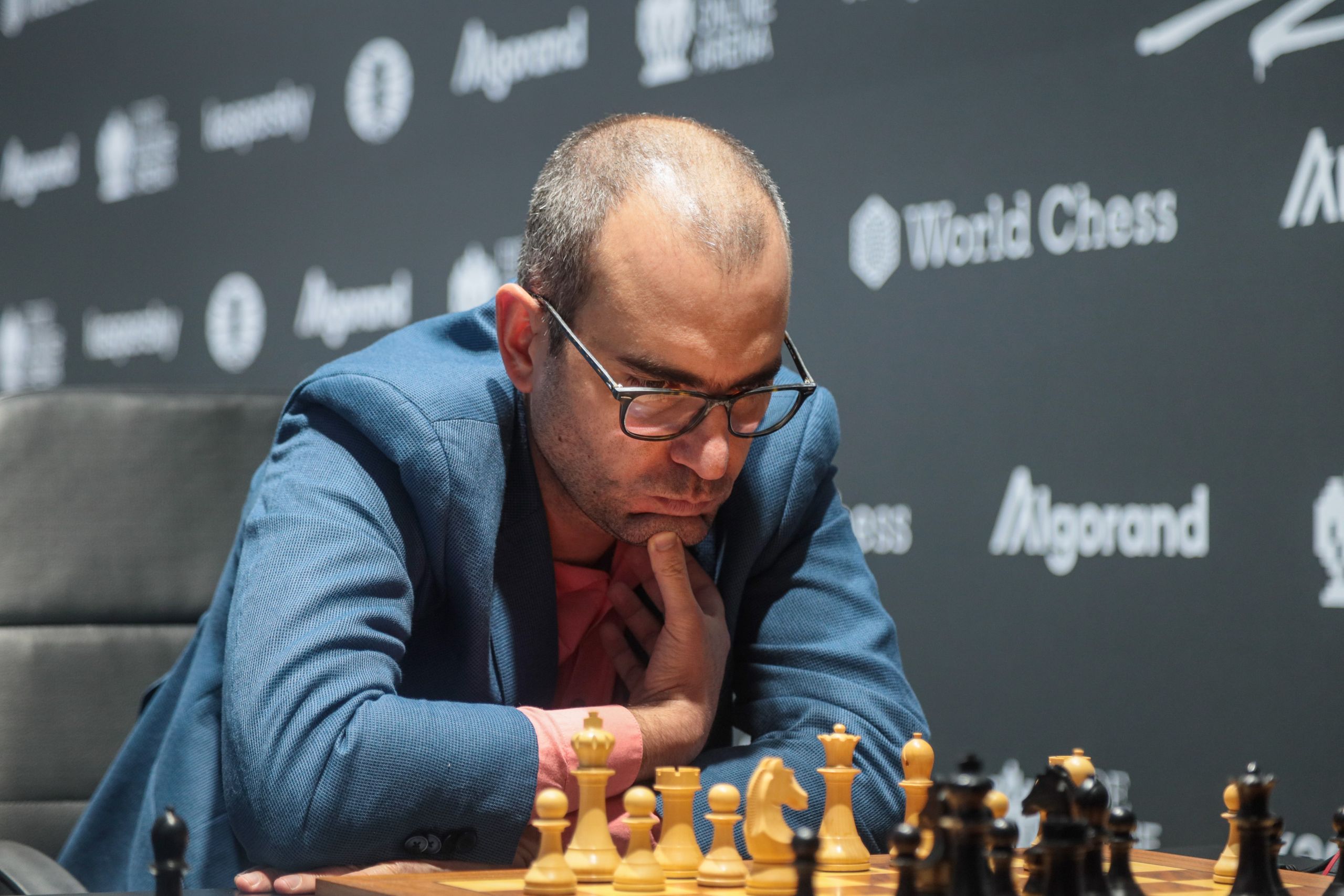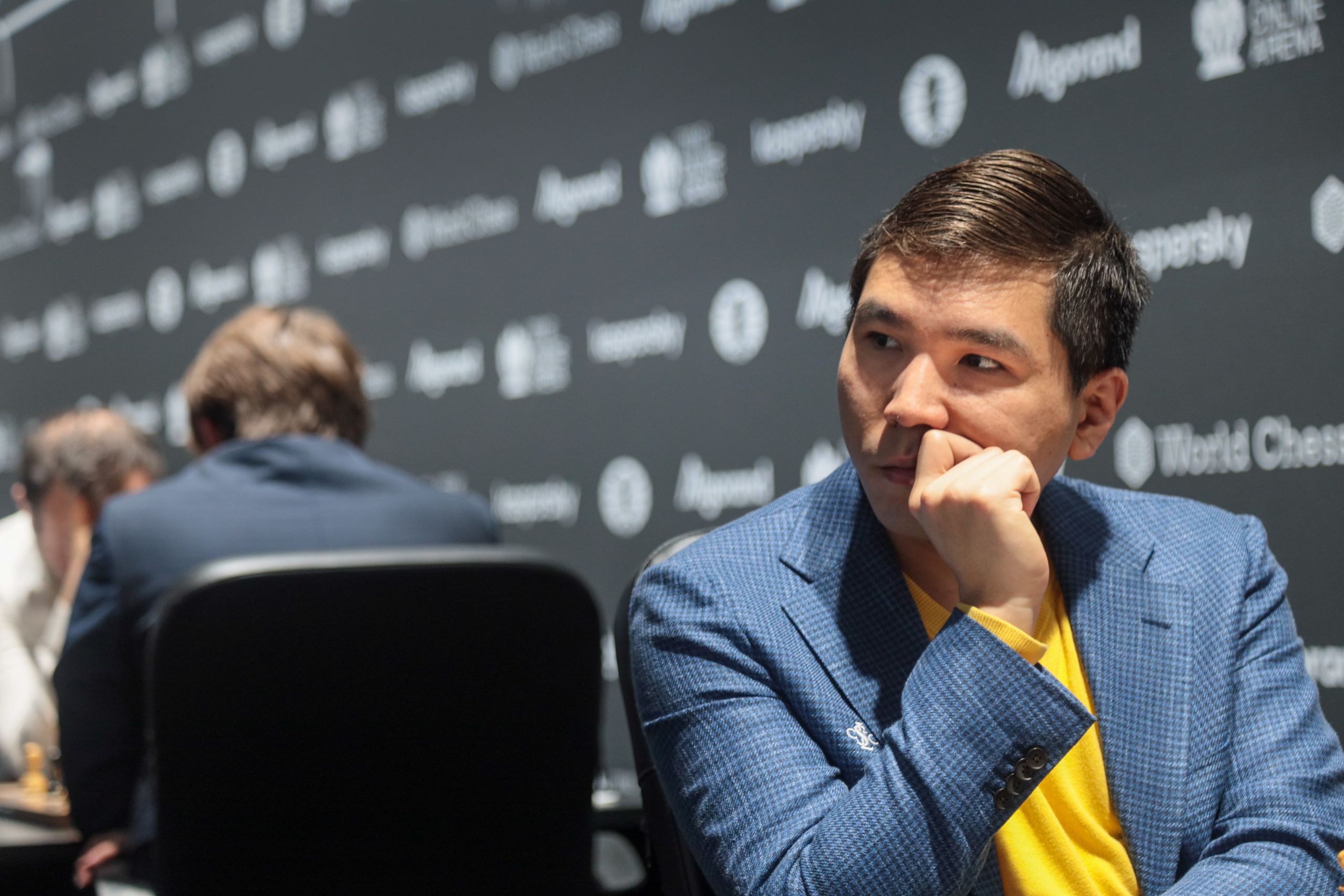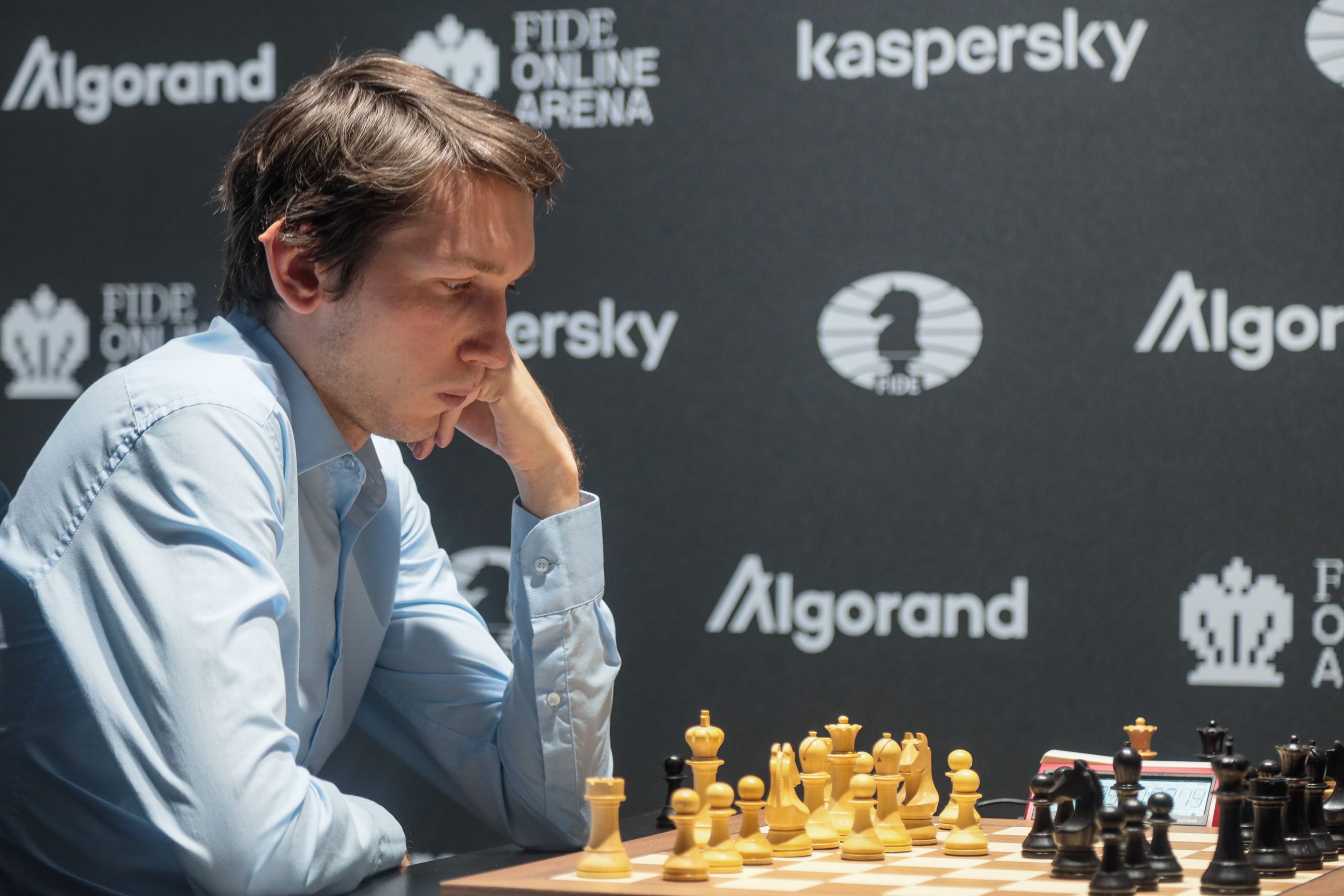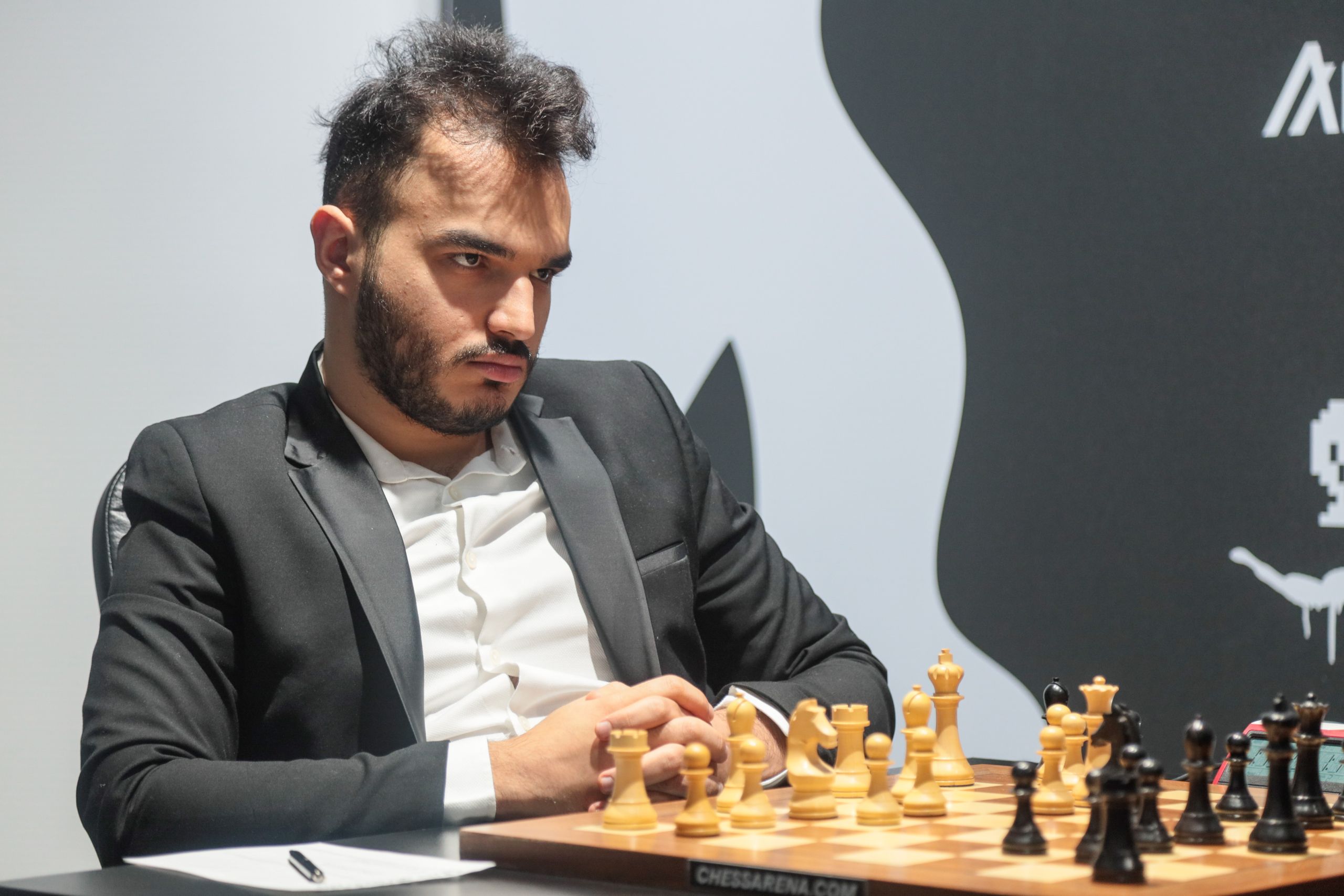Nakamura takes revenge against Aronian
Five games out of eight finished with decisive results on the fourth round of the final stage of the FIDE Grand Prix Series organised by World Chess.
In a crucial game for the overall Grand Prix standings, Hikaru Nakamura defeated Levon Aronian and caught up with him. Grigoriy Oparin outplayed Andrey Esipenko and took the lead in Poll A, leaving Levon and Hikaru half a point behind. The game between Leinier Dominguez and Daniil Dubov ended in a draw; Leinier thus remained in the lead of Pool B, now shared with Shakhriyar Mamedyarov who outplayed Vincent Keymer. Maxime Vachier-Lagrave also took revenge on Alexandr Predke, and before the free day Pool C ends up with all players tied on 2/4. Amin Tabatabaei avenged his first-round loss to Nikita Vitiugov, bringing all players of Pool D tied on 50% too.











Pool A
The game between Hikaru Nakamura and Levon Aronian was following the line in Ruy Lopez from the game Esipenko-Aronian in the round 3 but Hikaru chose to play 12.a4 instead of 12.Ne4. After numerous exchanges, White managed to get a promising position in the following endgame with rooks and minor pieces left on the board. “I think Levon got careless and thought there was no risk at all and went for Rg5-Rh5 but after I found 29.Ne7 I believe it’s very difficult for Black practically,” commented Hikaru after the game. It turned out to be one of the critical moments of the game and Hikaru suspected it was still possible to hold for a draw for Black with a hard play. Levon Aronian thought the mistake came even earlier on 27th move, where he had to choose c6 instead of b6 played in the game. Hikaru managed to get a very strong pass pawn on d-file and placed his rooks on the seventh rank, forcing his opponent to defend against numerous threats and eventually converting his advantage.
“It’s funny. It’s probably very bad for both of us because Grigoriy will probably win this game,” commented Nakamura on the Pool A situation after he won against Aronian.
One inaccurate move 10…c5 in the opening from Andrey Esipenko gave a chance to his opponent Grigoriy Oparin to get a very comfortable position with the stable edge due to the weak and isolated d-pawn in the Black’s camp. The game was a good example of how to treat this type of position: Grigoriy blocked the d-pawn, exchanged a few minor pieces and was ready to win the pawn in a couple of moves. Andrey Esipenko’s desperate attempt to complicate the position by playing 30...d4 and 31…a5 only postponed the catastrophe for Black and even though the game finished the last today, the outcome was never in doubt.
Pool B:
Shakhriyar Mamedyarov came up with an original idea 8.Nh4 in the four knights English Opening against Vincent Keymer. He read about this idea in an old book and remembered that g5 should not be good as White gets quite a strong attack on the King’s side. Vincent decided to check if the sacrifice was a correct one and got into trouble after unexpected 13.Qd2. He missed from far the fact that White’s pieces would get to Black’s King very quickly if he trades his Knight for the Bishop on h6. After a few accurate decisions White converted the game into a winning ending with a rook and 4 pawns vs 2 knights and a pawn.
Daniil Dubov played Two knights Defence today but Leinier Dominguez didn’t show any intention to check the Fried Liver Attack and chose a solid line with 4.d3. Daniil was playing very fast today and had a huge time advantage by move 20. Black found the way to sharpen the game after move 20 and thought he had some chances to get an advantage at this stage. However, Leinier found a nice recourse 23.f4 and 24.Re1 stopping Black’s attempts to get a strong initiative. After trading major pieces, a drawish Bishop vs Knight ending appeared on the board and the peace was signed after 52 moves.
Pool C
Sam Shankland forgot to check the line with Bf4 and Qb3 which happened in the game and got a slightly worse ending due to the double pawns on b-file. He decided to play more actively and put his rooks on a-file. “At some point I really didn’t like my position but move 16.Bf3 of Wesley was careless as I had g5 and Black is fine after that,” By playing g5 Sam Shankland offered a temporal pawn sacrifice and after following exchanges the game ended in a draw.
“If Maxime wins, then all of us are at 50 percent, and we will have a four-player tiebreak at the end,” said Sam after the game, while the MVL-Predke game was still in progress.
Maxime Vachier-Lagrave and Alexandr Predke played a hard-fought game in a Ruy Lopez. After a long manoeuvring play, Maxime was hoping to get some attacking chances on the King’s side but his opponent was finding interesting resources and even sacrificed a pawn to sharpen the game. Hoping to get a complex position with chances Maxime went for an unclear queen’s sacrifice. In time trouble Alexandr Predke didn’t find the best way to stop White’s threats and after inaccurate Rb2, Maxime outplayed his opponent.
“Objectively I was worse or maybe even losing at some point... scary, but at the same time I knew I had chances—that’s all I could hope for in this situation,” commented Maxime Vachier-Lagrave after the game.
Pool D
Yu Yangyi and Anish Giri waged a tense and very complicated battle in the Hungarian variation of the Grunfeld Defense. The opponents followed a well-known theoretical path for a while but as Anish said in the post-game interview, he mixed something up and by move 14 they stepped into uncharted territory. With his 16th move, the Dutchman started chipping away in the center by f6 but it seems that White had an edge, although, the position was still sharp and complicated. In the following complications, Giri sacrificed an exchange and got sufficient compensation as White’s king got stuck in the center. Yu managed to gradually consolidate his position and preserved some extra material, but a natural but hasty 34.Qd5? ruined all his efforts. Anish wisely avoided the exchange of the queens, created some dangerous threats along the dark squares and set up a nice trap (Qxf4! with the idea of Kxf4 Be5#). However, the Chinese GM wisely avoided it and forced a draw by perpetual.
“I was just fighting for survival. And in the end, I was hoping he would play for a win, blundering this Qxf4!” said Anish Giri with a smile after the game. “But of course, Yu Yangyi is too strong for such cheap tricks.”
Nikita Vitiugov, playing with Black, surprised Amin Tabatabaei with his opening choice of the Slav Defense and was first to introduce a novelty 12…a5. As Tabatabaei mentioned after the game, he started to play intuitively and it worked very well for him. The Iranian completely outmaneuvered his opponent, tied up all Black’s pieces and smoothly scored a full point. Vitiugov gave full credit to his opponent but was slightly upset about going down so meekly.
The pairings for Round 5 are as follows:
Pool A:
Hikaru Nakamura, (USA), 2750 – Grigoriy Oparin (FIDE), 2674
Levon Aronian (USA), 2785 – Andrey Esipenko (FIDE), 2723
Pool B:
Leinier Dominguez (USA), 2756 – Shakhriyar Mamedyarov (Azerbaijan), 2776
Daniil Dubov (FIDE), 2711 – Vincent Keymer (Germany), 2655
Pool C:
Maxime Vachier-Lagrave (France), 2761 – Wesley So (USA), 2778
Alexandr Predke (FIDE), 2682 – Sam Shankland (USA), 2704
Pool D:
Nikita Vitiugov (FIDE), 2726 – Anish Giri (Netherlands), 2771
Amin Tabatabaei (Iran), 2623 – Yu Yangyi (China), 2713
Leading partners supporting the FIDE Grand Prix Series 2022:
Kaspersky as the Official Cybersecurity Partner;
Algorand as the Official Blockchain Partner;
Prytek as the Technology Transfer Partner;
FIDE Online Arena as the official Partner.


